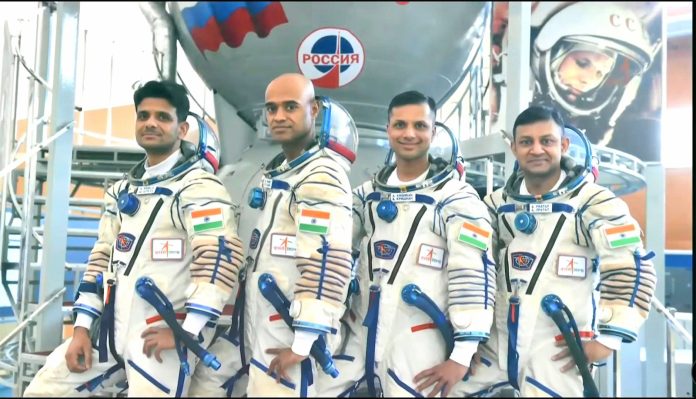New Delhi: The astronauts underwent training at Russia’s Gagarin Cosmonaut Training Center, the same facility where Rakesh Sharma, the first Indian to venture into space in 1984, received his training.
The four astronauts set to be part of the Gaganyaan spacecraft’s mission in 2024–2025 underwent 13 months of training in Russia. Group Captain Prashanth Nair, Group Captain Ajit Krishnan, Group Captain Angad Pratap, and Wing Commander Shubhanshu Shukla received generic space flight training at the Yuri Gagarin Cosmonaut Training Center in Star City, located approximately 30 km north of Moscow.
The Gagarin Cosmonaut Training Center (GCTC) is named after Yuri Gagarin, the first human in space. This center is tasked with training cosmonauts for Russian space missions, providing advanced space training facilities. Additionally, it conducts survival training for various landing scenarios, encompassing mountains, deserts, marshes, and the sea.
Views from the #Indian astronauts' training programme during their time in Russia.
— ISRO InSight (@ISROSight) February 27, 2024
• Group Captain Prashanth Balakrishnan Nair
• Group Captain Ajit Krishnan
• Group Captain Angad Prathap
• Wing Commander Shubhansku Shukla#Gaganyaan #ISRO pic.twitter.com/833zX4nLJG
The names of the four selected astronauts were unveiled by Prime Minister Narendra Modi at the Vikram Sarabhai Space Centre (VSSC) in Thiruvananthapuram on Tuesday. During the event, he awarded them “astronaut wings” and expressed his happiness, stating, “I am happy that today I got the opportunity to meet these astronauts and present them in front of the country. I want to congratulate them on behalf of the entire country… You are the pride of today’s India.”
The Gaganyaan mission marks India’s inaugural human spaceflight program, and substantial preparations are in progress at multiple ISRO (Indian Space Research Organisation) centers.
As per ISRO‘s details, the Gaganyaan project aims to showcase the capability for human spaceflight by sending a crew of three members into a 400 km orbit for a three-day mission. The objective is to safely bring them back to Earth, with a landing in the Indian sea waters.

